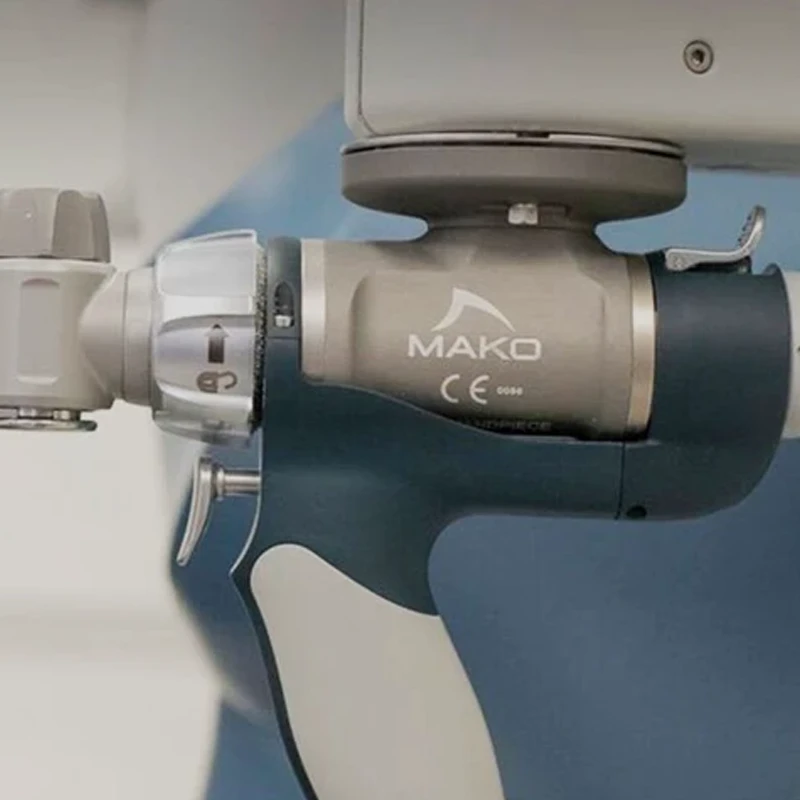Robotic knee replacement involves Dr Yu using modern technology to perform a knee replacement with greater precision.

What is a robotic-assisted knee replacement?
Robotic-assisted knee surgery utilises robotic-arm technology, enabling Dr Yu to carry out the procedure with enhanced accuracy through a smaller incision compared to conventional surgery.
What are the advantages of robotic knee surgery?
- Greater precision
The robotic system helps Dr Yu plan and execute the procedure with high accuracy, allowing for more precise alignment and placement of the implant. - Preservation of healthy tissue
Only the damaged part of the knee is replaced, and the robot helps to preserve more of the healthy bone and surrounding ligaments. - Smaller incision
The minimally invasive nature of the procedure typically requires a smaller incision, which may lead to less pain and a quicker recovery. - Faster recovery
Patients often experience a shorter hospital stay and return to daily activities more quickly than with traditional knee replacement. - More natural knee movement
Because the surgery is more targeted and the implant fits more precisely, the knee may feel more natural after healing.
What does robotic knee surgery involve?
The process begins before the surgery with detailed imaging, usually a CT scan, of your knee. This scan is used to create a 3D virtual model of your knee joint. Dr Yu uses this model to plan the surgery, determine the ideal implant size and placement, and customize the procedure to your unique anatomy.
During the surgery, the robotic system does not perform the procedure on its own. Instead, it assists Dr Yu by guiding the instruments and helping them stay within the planned surgical area. The robotic arm provides real-time feedback and helps ensure that the damaged bone and cartilage are removed accurately and the new implant is positioned with high precision.
This increased accuracy can lead to better alignment, improved function, less pain after surgery, and a faster recovery compared to traditional knee replacement methods. The goal is to create a knee that feels more natural and lasts longer.
Risks of robotic knee surgery
Like any surgical procedure, robotic-assisted knee surgery comes with certain risks, although it is generally safe and effective. Possible complications include infection at the surgical site, blood clots in the legs or lungs, and injury to surrounding nerves or blood vessels during surgery. Some patients may experience stiffness or limited range of motion in the knee after the procedure. There is also the possibility of implant-related issues, such as loosening, misalignment, or wear over time.
In rare cases, fractures in the bone may occur during or after the surgery, or patients may have an allergic reaction to the implant materials. Additionally, some individuals may continue to experience pain or be dissatisfied with the results despite the technical advantages of the robotic approach.
For all appointments and enquiries, please phone (02) 8045 5688
Monday to Friday 9am–5pm
Frenchs Forest
Peninsula Orthopaedics
Suite 20, Level 7
Northern Beaches Hospital
105 Frenchs Forest Rd
Frenchs Forest NSW 2086
Chatswood
Orthopaedic & Arthritis Specialist Centre
Level 2, Gallery Arcade
445 Victoria Avenue
Chatswood NSW 2067
© 2018– Dr Julian Yu | Privacy Policy | Disclaimer | Website by:

